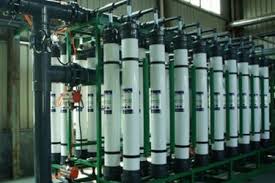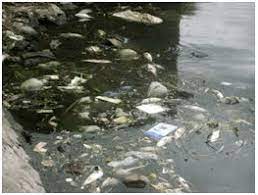Membrane Geometries and Module Configuration
Today we are going to discuss about membrane geometries and module configuration. Membrane geometries refer to the physical configurations and structures of membrane-based filtration systems used in separation processes.
These geometries are designed to optimize the efficiency and performance of the membranes in various applications, such as water treatment, gas separation, and liquid filtration.
Membrane Geometries
Spiral wound modules: This consists of large consecutive layers of membrane and support material rolled up around a tube.
Advantages
1. Maximizes surface area.
2. Less expensive.
Disadvantage
i. More sensitive to pollution.
Tubular membrane

The feed solution flows through the membrane core and the permeate is collected in the tubular housing.
Advantage
i. Generally used for viscous or bad quality fluids.
Disadvantage
i. System is not very compact and has a high cost per unit area installed.
Hollow fiber membrane
The modules contain several small (0.6 to 2 mm diameter) tubes or fibers. The feed solution flows through the open cores of the fibers and the permeate is collected in the cartridge area surrounding the fibers. The filtration can be carried out either ―inside-out‖ or ―outside-in.
Here are some common membrane geometries:
1. Flat Sheet Membranes: Flat sheet membranes are planar structures where the membrane material is arranged in a flat, sheet-like form. These membranes are often used in filtration applications where simplicity and ease of handling are essential. Flat sheet membranes are commonly found in laboratory-scale experiments and certain industrial applications.
2. Hollow Fiber Membranes: Hollow fiber membranes consist of small, tubular fibers with a hollow core. These fibers are bundled together to form a module, and the feed solution is circulated either through the lumen (inside) or the external surface of the fibers. Hollow fiber membranes are widely used in applications such as water purification, dialysis, and gas separation.
3. Tubular Membranes: Tubular membranes have a cylindrical shape, similar to a pipe or tube. The feed solution flows through the inside of the tube, while the permeate is collected on the outside.
Tubular membranes are employed in various industrial processes, including wastewater treatment and the separation of specific components from liquids.
4. Spiral-Wound Membranes: Spiral-wound membranes are constructed by wrapping a flat sheet membrane around a permeate collection tube in a spiral fashion.
This design maximizes the membrane surface area within a compact space. Spiral-wound membranes are commonly used in reverse osmosis and ultrafiltration systems for water treatment.
5. Plate and Frame Membranes: Plate and frame membranes consist of flat, thin membranes sandwiched between plates and frames. This configuration allows for easy assembly into modular units.
Plate and frame membranes are commonly utilized in applications requiring high-pressure filtration, such as nanofiltration and reverse osmosis.
6. Capillary Membranes: Capillary membranes are small-diameter tubes that resemble hollow fibers but are often single, standalone units. These membranes are used in various applications, including blood filtration, where precise separation is required.
7. Spiral Membranes: Spiral membranes, similar to spiral-wound membranes, have a coiled or spiral configuration. They are particularly well-suited for large-scale applications where efficient use of space and high membrane area are crucial. Spiral membranes are commonly used in water desalination and other industrial processes.
8. Crossflow Filtration Systems: Crossflow filtration systems utilize a tangential flow of the feed solution across the membrane surface. This design helps reduce fouling by continuously sweeping away particles and contaminants from the membrane surface.
Crossflow systems are commonly employed in various membrane geometries, including hollow fiber, tubular, and flat sheet configurations.
The choice of membrane geometry depends on the specific requirements of the separation process, the characteristics of the feed solution, and the desired outcome in terms of permeate quality and quantity.
Each geometry has its advantages and limitations, and selecting the appropriate configuration is essential for optimizing the performance of membrane-based separation processes.
Read Also: Sedimentation Processes in Waste-water Treatment
Module Configuration
1. Pressurized system or pressure-vessel configuration: TMP (trans-membrane pressure) is generated in the feed by a pump, while the permeate stays at atmospheric pressure.
Pressure-vessels are generally standardized, allowing the design of membrane systems to proceed independently of the characteristics of specific membrane elements.
2. Immersed system: Membranes are suspended in basins containing the feed and open to the atmosphere. Pressure on the influent side is limited to the pressure provided by the feed column.
TMP is generated by a pump that develops suction on the permeate side. Ultrafiltration, like other filtration methods can be run as a continuous or batch process
Applications of Ultrafiltration
- Dialysis and other blood treatments.
- Concentration of milk before making cheese.
- Downstream processing (e.g., concentration) of biotechnology- derived proteins (e.g., therapeutic antibodies).
- Desalting and solvent-exchange of proteins (via diafiltration).
- Fractionation of proteins.
- Clarification of fruit juice.
- Recovery of vaccines and antibiotics from fermentation broth.
- Laboratory grade water purification.
- Industrial waste-water treatment.
- Drinking water disinfection (including removal of viruses).
- Removal of endocrines and pesticides combined with Suspended Activated Carbon pretreatment.
- Ultrafiltration (industrial).
- Ultrafiltration (renal).
- Aquapheresis.
In conclusion, from the above we can conclude that Ultrafiltration is a pressure-driven purification process in which water and low molecular weight substances permeate a membrane while particles, colloids, and macromolecules are retained.
The primary removal mechanism is size exclusion, although the electrical charge and surface chemistry of the particles or membrane may affect the purification efficiency. It has got a wide variety of uses, one of which is in industrial waste-water treatment.
Read Also: Rotating Biological Discs Process
Read Also: Growing and Care Guide of Cauliflower



